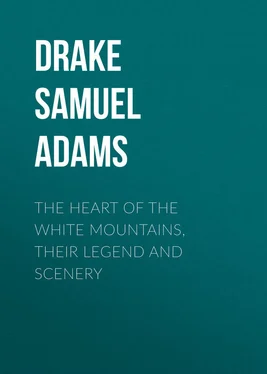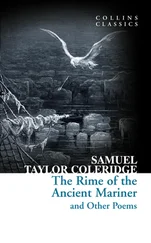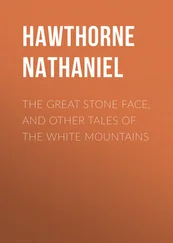Samuel Drake - The Heart of the White Mountains, Their Legend and Scenery
Здесь есть возможность читать онлайн «Samuel Drake - The Heart of the White Mountains, Their Legend and Scenery» — ознакомительный отрывок электронной книги совершенно бесплатно, а после прочтения отрывка купить полную версию. В некоторых случаях можно слушать аудио, скачать через торрент в формате fb2 и присутствует краткое содержание. Жанр: foreign_antique, foreign_prose, на английском языке. Описание произведения, (предисловие) а так же отзывы посетителей доступны на портале библиотеки ЛибКат.
- Название:The Heart of the White Mountains, Their Legend and Scenery
- Автор:
- Жанр:
- Год:неизвестен
- ISBN:нет данных
- Рейтинг книги:4 / 5. Голосов: 1
-
Избранное:Добавить в избранное
- Отзывы:
-
Ваша оценка:
- 80
- 1
- 2
- 3
- 4
- 5
The Heart of the White Mountains, Their Legend and Scenery: краткое содержание, описание и аннотация
Предлагаем к чтению аннотацию, описание, краткое содержание или предисловие (зависит от того, что написал сам автор книги «The Heart of the White Mountains, Their Legend and Scenery»). Если вы не нашли необходимую информацию о книге — напишите в комментариях, мы постараемся отыскать её.
The Heart of the White Mountains, Their Legend and Scenery — читать онлайн ознакомительный отрывок
Ниже представлен текст книги, разбитый по страницам. Система сохранения места последней прочитанной страницы, позволяет с удобством читать онлайн бесплатно книгу «The Heart of the White Mountains, Their Legend and Scenery», без необходимости каждый раз заново искать на чём Вы остановились. Поставьте закладку, и сможете в любой момент перейти на страницу, на которой закончили чтение.
Интервал:
Закладка:
Next beyond is the Cathedral Ledge, so called from the curious rock cavity it contains; and still farther up the valley is Humphrey’s Ledge, one of the finest rock-studies of them all when we stand underneath it. But the reader now has a general acquaintance with North Conway, and with its topography. He begins his study of mountain beauty in a spirit of loving enthusiasm, which leads him on and on to the ripeness of an education achieved by simply throwing himself upon the bosom of indulgent Nature, putting the world as far as possible behind him.
But now from these masses of hard rock let us turn once more to the valley, where the rich intervales spread an exhaustless feast for the eye. If autumn be the season, the vase-like elms, the stacks of yellow corn, the golden pumpkins looking like enormous oranges, the floor-cloth of green and gold damasked with purple gorse and coppice, give the idea of an immense table groaning beneath its luxurious weight of fruit and flowers.
Turn now to the mountain presiding with such matchless grace and dignity over the village. Kearsarge, in the twilight, deserves, like Lorenzo di Medicis, to be called “the magnificent.” The yellow and orange foliage looks, for all the world, like a golden shower fallen upon it. The gray ledges at the apex, which the clear, yellow light renders almost incandescent, are far more in harmony with the rest of the mountain than in the vernal season.
Are we yet in sympathy with that free-masonry of art through which our eminent landscape-painters recognized here the true picturesque point of view of the great mountains, the effective contrasts and harmonious ensemble of the near scenery – the grandest allied with the humblest objects of nature? One cannot turn in any direction without recognizing a picture he has seen in the studios, or in the saloons of the clubs.
The first persons I saw on the platform of the railway-station were my quondam companions, the colonel and George. We met like friends who had parted only half an hour before. During dinner it was agreed that we should pass our afternoon among the cliffs. This arrangement appeared very judicious; the distance is short, and the attractions many.
We accordingly set out for the ledges at three in the afternoon. The weather did not look promising, to be sure, but we decided it sufficiently so for this promenade of three or four hours.
While en route, let me mention a discovery. One morning, while sitting on the piazza of the Kearsarge House enjoying the dreamy influence of the warm atmosphere, which spun its soft, gossamer web about the mountains, I observed a peculiar shadow thrown by a jutting mass of the Cathedral Ledge upon a smooth surface, which exactly resembled a human figure standing upright. I looked away, then back again, to see if I was not the victim of an illusion. No, it was still there. Now it is always there. The head and upper part of the body were inclined slightly forward, the legs perfectly formed. At ten every forenoon, punctual to the hour, this phantom, emerging from the rock, stands, fixed and motionless as a statue, in its niche. At every turn of the sun, this shade silently interrogates the feverish activity that has replaced the silence of ages. One day or another I shall demand of my phantom what it has witnessed.
The road we followed soon turned sharply away from the main street of the village, to the left, and in a few rods more plunged into the Saco, leaving us standing on the bank, looking askance at a wide expanse of water, choked with bowlders, around which the swift current whirled and foamed with rage. We decided it too shallow to swim, but doubted if it was not too deep to ford. We had reached our Rubicon.
“We must wade,” said the colonel, with decision.
“Precisely my idea,” assented George, beginning to unlace his shoes.
I put my hand in the river. Ugh! it was as cold as ice.
Having assured ourselves no one saw us, we divested ourselves of shoes, stockings, pantaloons, and drawers. We put our stockings in our pockets, disposed our clothing in a roll over the shoulder, as soldiers do on the march, tied our shoes together, and hung them around our necks. Then, placing our hands upon each others’ shoulders, as I have seen gymnasts do in a circus, we entered the river, like candidates for baptism, feeling our way, and catching our breath.
“ Sans-culottes ,” suggested the colonel, who knew a little French.
“Kit-kats,” added George, who knows something of art, as the water rose steadily above our knees.
The treacherous bowlders tripped us up at every step, so that one or the other was constantly floundering, like a stranded porpoise in a frog-pond. But, thanks to our device, we reached the middle of the river without anything worse than a few bruises. Here we were fairly stopped. The water was waist-deep, and the current every moment threatened to lift us from our feet. How foolish we looked!
Advance or retreat? That was the question. One pointed up stream, another down; while, to aggravate the situation, rain began to patter around us. In two minutes the river was steaming. George, who is a great infant, suggested putting our hands in our pockets, to keep them warm, and our clothes in the river, to keep them dry.
“By Jove!” ejaculated the colonel, “the river is smoking.”
“Let us join the river,” said George, producing his cigar-case.
Putting our heads together over the colonel’s last match, thus forming an antique tripod of our bodies, we succeeded in getting a light; and for the first time, I venture to affirm, since its waters gushed from the mountains, incense ascended from the bosom of the Saco.
“I’m freezing!” stuttered George.
I was pushing forward, to cut the dilemma short, when the colonel interposed with,
“Stop; I want to tell you a story.”
“A story? here – in the middle of the river?” we shouted.
“In the middle of the river; here – a story!” he echoed.
“I would like to sit down while I listen,” observed George.
Evidently the coldness of the water had forced the blood into our friend’s head. He was ill, but obstinate. We therefore resigned ourselves to hear him.
“This river and this situation remind me of the Potawatamies,” he began.
“Potawatamies!” we echoed, with chattering teeth. “Go on; go on.”
“When I was on the Plains,” continued the colonel, “I passed some time among those Indians. During my stay, the chief invited me to accompany him on a buffalo-hunt. I accepted on the spot; for of all things a buffalo-hunt was the one I was most desirous of seeing. We set out at daybreak the next morning. After a few hours’ march, we came to a stream between deep banks, and flowing with a rapid current, like this one – ”
“Go on; go on!” we shiveringly articulated.
“At a gesture from the chief, a young squaw dismounted from her pony, advanced to the edge of the stream, and began, timidly, to wade it. When she hesitated, as she did two or three times, the chief said something which encouraged her to proceed. All at once she stopped, threw up her arms, and screamed something in the Indian dialect; at which all the braves burst into a loud laugh, the squaws joining in.
“‘What does she say?’ I asked of the chief.
“‘Up to the middle,’ he replied, pushing his pony into the stream.”
The stream grew shallower, so that we soon emerged from the water upon the opposite bank. Here we poured the water from our shoes, and resumed our wet clothing. Everything was cooled, except our ardor.
As we approached nearer, the ledges were full of grim recesses, rude rock-niches, and traversed by perpendicular cracks from brow to base. “Take care!” I shouted; “there is a huge piece of the cliff just ready to fall.”
Читать дальшеИнтервал:
Закладка:
Похожие книги на «The Heart of the White Mountains, Their Legend and Scenery»
Представляем Вашему вниманию похожие книги на «The Heart of the White Mountains, Their Legend and Scenery» списком для выбора. Мы отобрали схожую по названию и смыслу литературу в надежде предоставить читателям больше вариантов отыскать новые, интересные, ещё непрочитанные произведения.
Обсуждение, отзывы о книге «The Heart of the White Mountains, Their Legend and Scenery» и просто собственные мнения читателей. Оставьте ваши комментарии, напишите, что Вы думаете о произведении, его смысле или главных героях. Укажите что конкретно понравилось, а что нет, и почему Вы так считаете.












